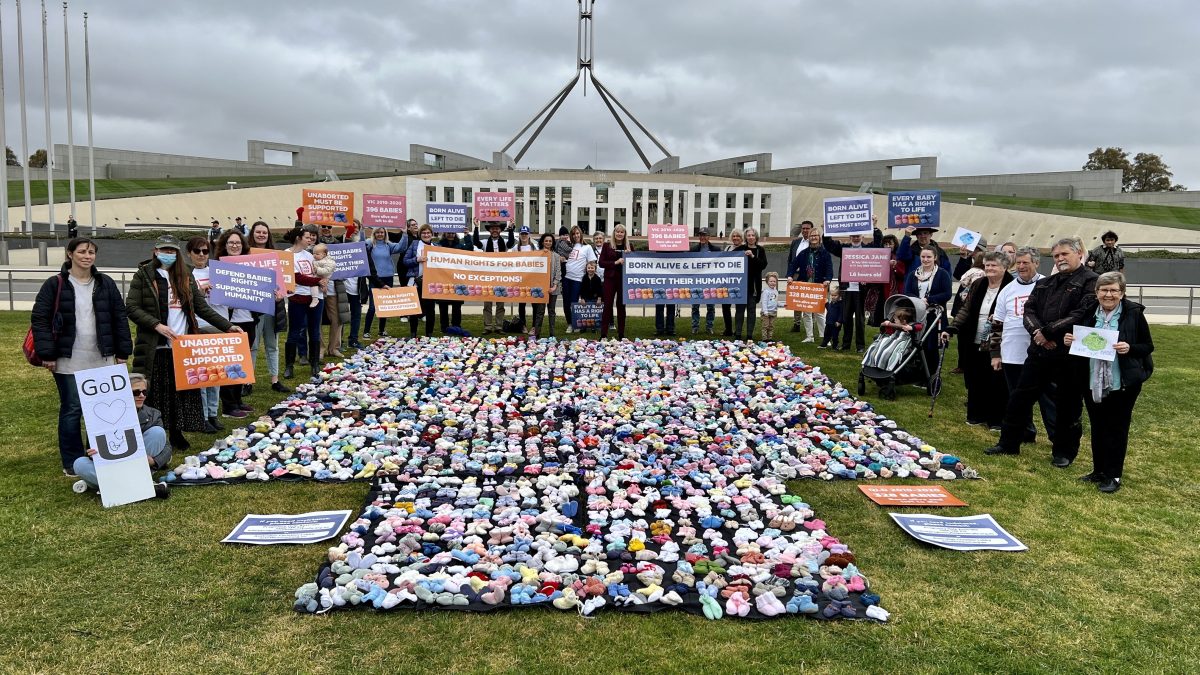
The protest was organised by the Australian Christian Lobby (ACL). Photo: James Coleman.
The lawn of Parliament House in Canberra was decked out with more than 800 knitted baby booties yesterday (2 August), to represent the number of babies the protesters claim were denied medical care across Australia after failed abortions.
The spectacle was organised by the Australian Christian Lobby (ACL) in support of the ‘Children Born Alive Protection Bill’ presented by Queensland senator Matt Canavan in November last year and currently before a Senate Committee.
The bill would require health practitioners to “provide medical care or treatment to children born alive as a result of terminations”. This includes “life-saving emergency treatment” or palliative care, as well as pain relief.
Withholding this care would attract a fine of up to $550,000 for the health practitioner. The mother would not be liable.
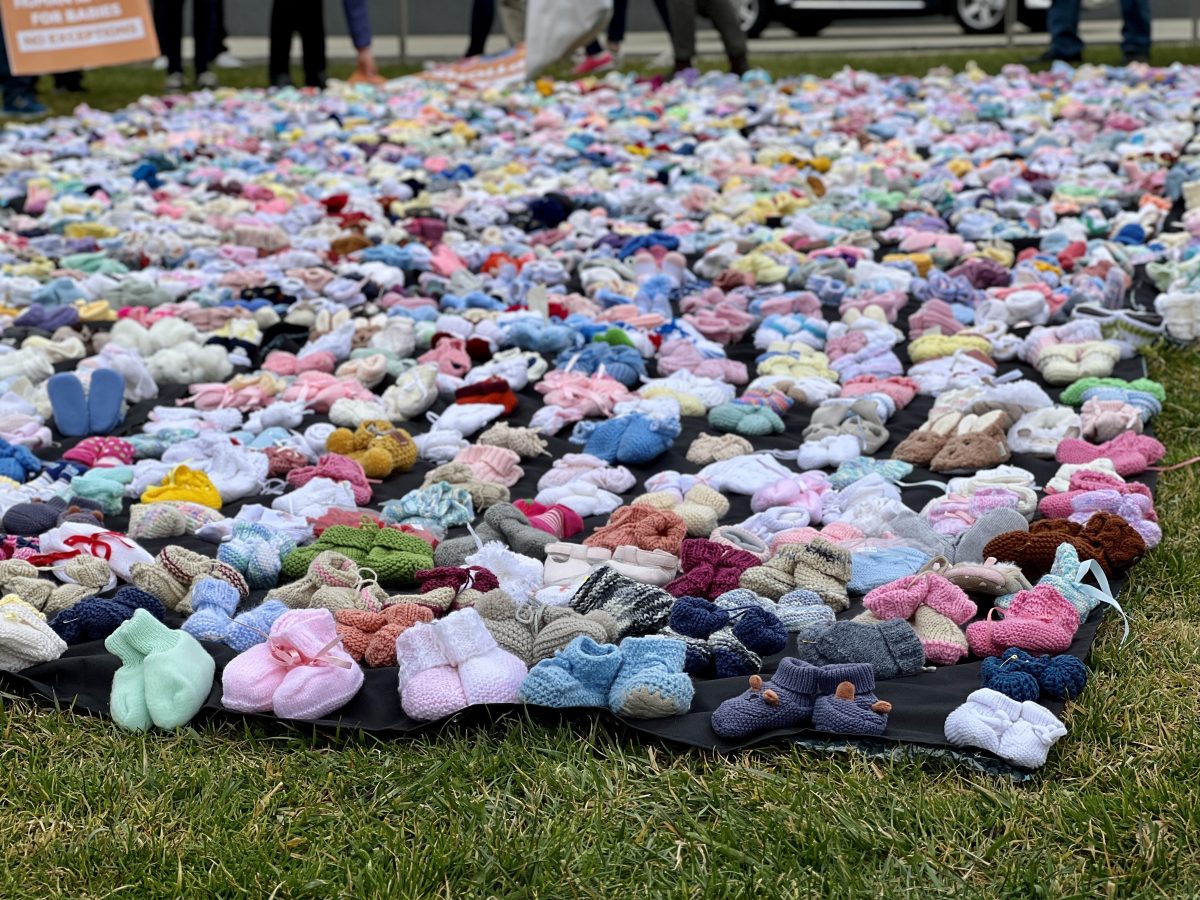
The booties were donated by supporters across Australia and fastened to tablecloths. Photo: James Coleman.
ACL national director Wendy Francis says the need for the bill is brought on by what she claims is a growing number of cases where babies have been born alive after abortions and “left to die”.
“These babies are not being given any pain relief or medical assistance, whereas babies in a similar place that are wanted are given all of the care Australians know we are so good at.
“We’re here, backing up this bill, and giving a very visual demonstration of the number of babies that could be alive today, but are not.”
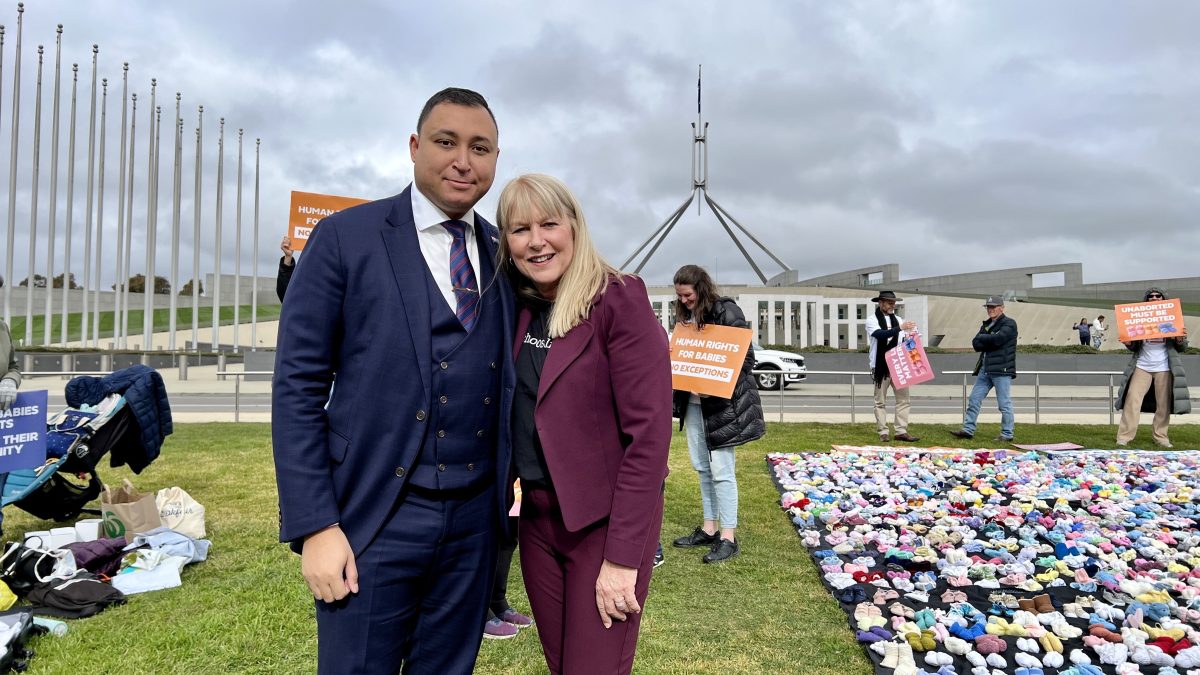
Victorian senator Ralph Babet and Australian Christian Lobby (ACL) national director Wendy Francis. Photo: James Coleman.
A termination of pregnancy (abortion) is classed as ‘late’ when it occurs after 20 weeks gestation. The baby and placenta is either removed surgically using forceps (under the guidance of ultrasound) or medically by inducing labour with anti-progesterone drugs.
Only a few states and territories provide data on how many babies are born alive after these attempts fail, however.
According to Safer Care Victoria, the state government’s health department, 396 babies over 20 weeks in gestation or 400 grams in weight were born alive between 2010 and 2020 after “termination of pregnancy for suspected or confirmed congenital anomaly”.
Congenital anomalies include a cleft lip or palate, as well as limb deformities or organ dysfunction.
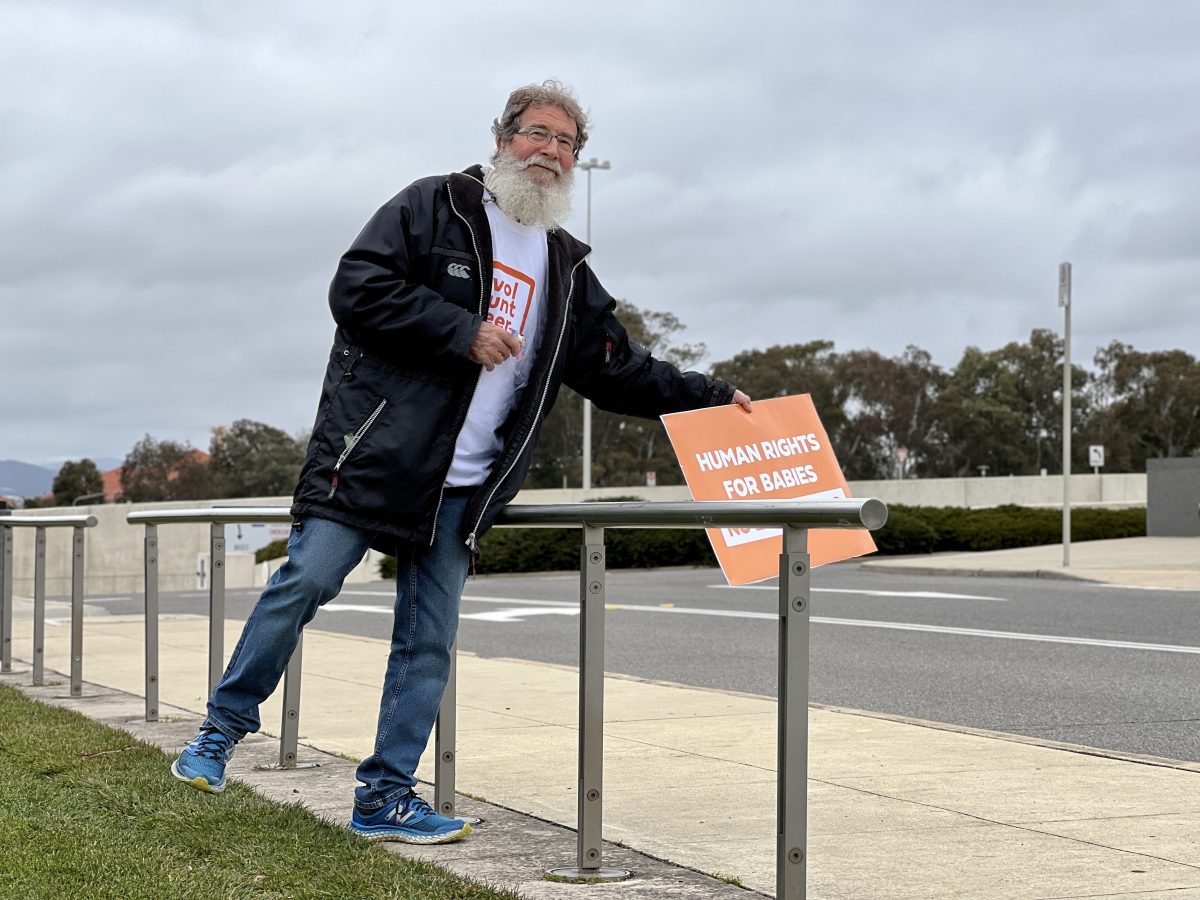
The ACT’s hospitals and medical centres provide abortions up to 16 weeks. Photo: James Coleman.
In Queensland, 328 babies were born alive after failed terminations between 2010 and 2020.
On average, more than 20 per cent of terminations over 20 weeks gestation in Queensland in 2020 resulted in a baby born alive. This is more than double the rate from 2010.
Queensland Health advises that “if a live birth occurs … handle baby gently and carefully and wrap to provide warmth”.
“Do not provide life-sustaining treatment (e.g. gastric tubes, IV lines, oxygen therapy) … provide sensitive emotional support to parents throughout the process”.
The ACT doesn’t differentiate between babies born alive as a result of a failed termination and babies born alive in other circumstances, such as in premature spontaneous labour.
But according to a 2017 report into the deaths of children and young people in the ACT, the major causes of death listed on death certificates for newborns was “extreme prematurity, prematurity, and termination of pregnancy due to major foetal abnormalities”.
The ACT’s hospitals and medical centres don’t provide abortions beyond 16 weeks, unlike NSW’s cut-off at 22 weeks and Victoria’s at 24 weeks.

Former ACT ACL volunteer leader Tessa Keast, with children Henry and Jensen Keast, and current ACT ACL volunteer leader Sherna Walters. Photo: James Coleman.
The recent Inquiry into Abortion and Reproductive Choice in the ACT put this down to the fact abortions after 16 weeks are “more complex and require additional accreditation requirements and adherence to standards”.
The inquiry went on to recommend the ACT Government “invest in the infrastructure and services necessary to provide post-16-week abortions in the ACT and subsidise interstate patient travel to access this service in the interim”.
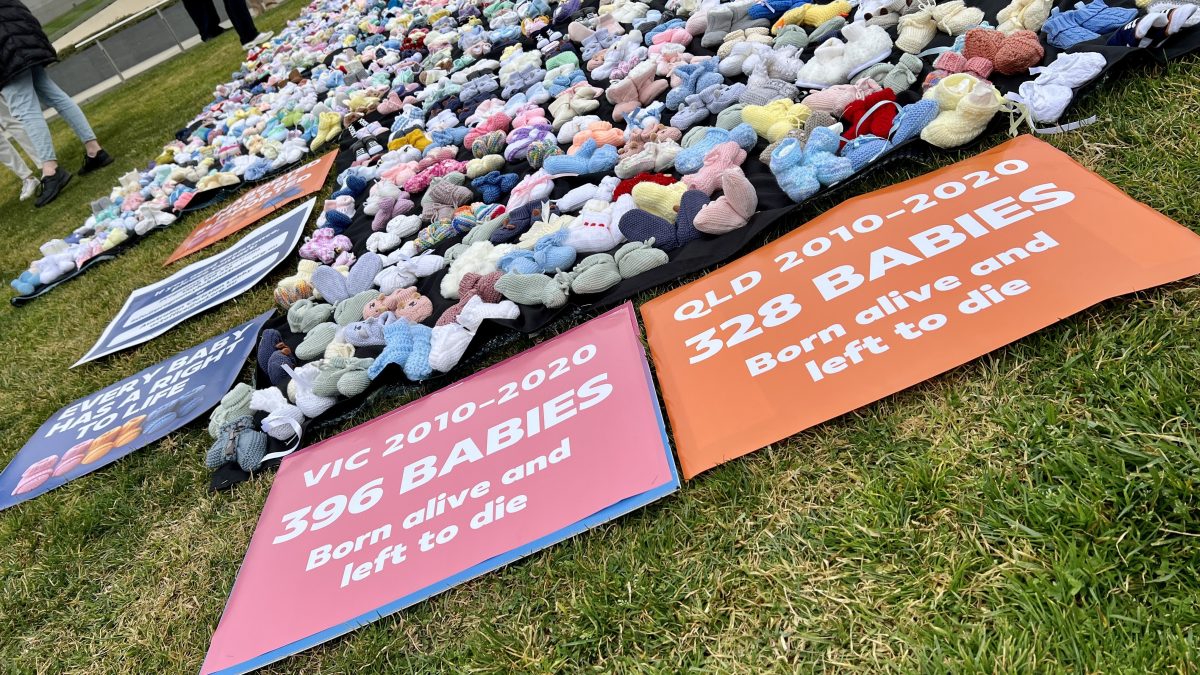
Only Victoria and Queensland provide data on failed abortions. Photo: James Coleman.
Ms Francis says the ‘Children Born Alive Protection Bill’ echoes similar laws already in place in South Australia (which deems a foetus a person when “born alive”) and would ensure national protections are in place.
“We’re really hoping this bill will make it through the committee process … so there can be a real discussion about this,” she said.
“We want everyday Australians to understand not just what’s happening to the babies, but to the women who feel they need late-term abortions.”
The Senate Committee will hand down its report on 31 August 2023.
The Australian Medical Association (AMA) declined to comment.












